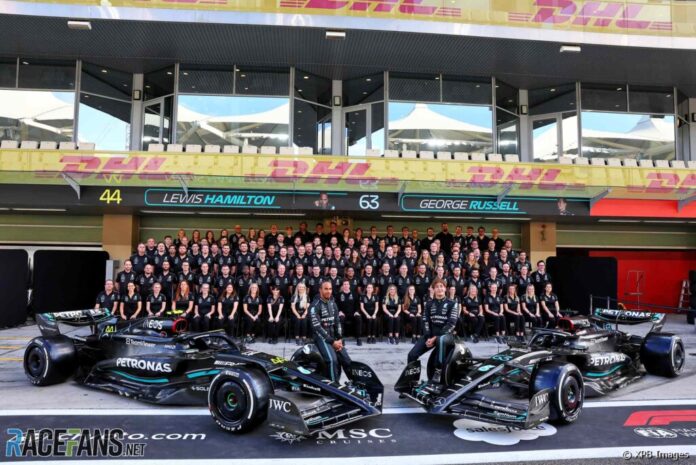Background of the Mercedes F1 Team
The Mercedes Formula 1 (F1) team has had a rocky recent history:
In the world of F1 racing, few teams command as much respect and attention as the Mercedes-A.M.G. Petronas Formula One Team. With a storied history of dominance, unparalleled engineering prowess, and a roster of talented drivers, Mercedes has established itself as the benchmark of excellence in the sport. However, as the landscape of Formula 1 undergoes seismic shifts, the future of the Mercedes F1 team is shrouded in uncertainty.

The Rise and Fall
The team’s journey began with its re-entry into Formula 1 as a works team in 2010, following its acquisition of the Brawn G.P. team. Led by the legendary Ross Brawn and powered by the formidable Mercedes engines, the team quickly made its mark on the sport. Under the astute leadership of Ross Brawn, who brought with him a wealth of experience and success from his tenure with Ferrari, the newly rebranded Mercedes team wasted no time in asserting its presence on the grid. Leveraging the expertise of Brawn and the technical prowess of Mercedes-Benz, the team underwent rapid development, culminating in a debut season that showcased both its potential and determination. With a combination of strategic brilliance and engineering excellence, Mercedes laid the groundwork for its ascent to the summit of Formula 1 in the years to come.
Furthermore, central to Mercedes’ unparalleled success in recent years has been the incomparable talent of Lewis Hamilton. Widely regarded as one of the greatest drivers in the history of Formula 1, Hamilton has been the linchpin of Mercedes’ dominance since joining the team in 2013. Together, Hamilton and Mercedes have rewritten the record books, claiming 82 race wins, 133 podium appearances, and seven Drivers’ Championship titles (the best F1 driver of the season).
Beyond the prowess of its drivers, Mercedes’ dominance has been underpinned by its relentless pursuit of technological innovation and engineering excellence. Mercedes spends north of $330 million each year, including investments in aerodynamics, engine technology, materials science, data analytics, simulation, and more. The total expenditure can vary significantly from year to year based on factors such as regulatory changes, competitive pressures, and strategic priorities, but it is safe to say that Mercedes strives to improve their car and maintain their significant presence in F1.
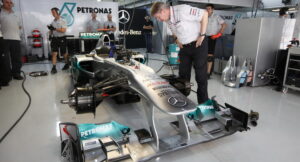
Despite its unparalleled success, the Mercedes F1 team faces a myriad of challenges as it braces for an impending regulatory overhaul in Formula 1. These changes, focusing on sustainability, cost reduction, and competitive balance, signal a seismic shift in the sport’s landscape. Mercedes must adapt to new environmental standards, address escalating costs, and contend with a more level playing field. The team’s dominance, once assured, now faces unprecedented scrutiny, requiring strategic recalibration and a renewed commitment to innovation. As Mercedes navigates these turbulent waters, the path to sustained success is fraught with uncertainty, but also presents an opportunity for the team to reaffirm its resilience and indomitable spirit in the face of adversity.
The latest shakeup for Mercedes is their star driver, Lewis Hamilton’s exit from the team next year. They were the same whispers that have long lingered around Hamilton, Formula 1’s seven-time World Champion – Mercedes’ champion. The same ones were briefly silenced when Hamilton signed a two-year deal to remain at Mercedes last August, appearing to commit his future until the end of 2025. Wolff, the Mercedes team principal, wanted to wait until they met on Wednesday morning to discuss it over breakfast, where Hamilton broke the news to him. “He said to me that he has decided to race for Ferrari in 2025,” Wolff explained. “That was basically it. We had a good hour of conversation, and this is where we are.” In that hour, Wolff did not try to change Hamilton’s mind, accepting his reasoning. “He felt he needed change,” Wolff said. “I can understand that.” It’s the timing of Hamilton’s decision that left Wolff, and F1 as a whole, shocked. Hamilton had decided to leave the team at the end of the year without even driving the new, totally redesigned car – the one both he and the team hoped would return Mercedes to the front.
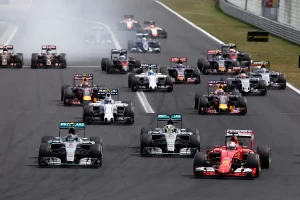
To add fuel to the fire, new teams such as McLaren Honda are currently experiencing newfound success in the 2023 and 2024 F1 seasons, challenging the once undisputed champions – Mercedes, Ferrari, and Aston Martin.
Very few can match the seven-time World Champion’s driving ability and no one on the grid can match his marketing appeal, but Wolff said on Friday that the situation is “a chance to do something bold.” George Russel represents a very safe pair of hands and is under contract until the end of 2025, meaning Mercedes could take a punt on a second driver in the knowledge they will have a very high benchmark to measure against.
Possible Lewis Hamilton Replacements
Mercedes F1 Team Principal, Wolff, admitted that the timing of Hamilton’s announcement had “bitten” the team as Charles Leclerc and Lando Norris recently committed their futures to Ferrari and McLaren, respectively, but there are still at least five very capable candidates available in one form or another.
The first candidate is the Spanish national, Carlos Sainz – a current Ferrari driver (who Hamilton is replacing) whose contract doesn’t end until late 2024. Sainz is a solid racer with a track record of measuring up respectably against tough teammates, including Leclerc, Norris and Max Verstappen.
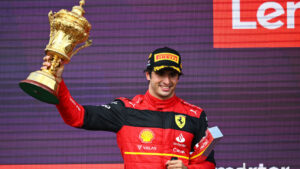
The second possible candidate is Andrea Kimi Antonelli, a 17 year old Mercedes junior driver, who would represent the long-term future for Mercedes. Born in 2006, Antonelli was scouted by Mercedes at the age of 11 and joined the team’s junior program in April 2019. A series of European go-kart titles confirmed what Mercedes had hoped about the young Italian, and at the end of 2021 he got his first taste of car racing in Italian Formula 4. F4 titles in Italy and Germany followed in 2022 before he won the Formula Regional European Championship last year. This year, he will skip Formula 3 to make his debut in Formula 2, and the early signs from testing are all very promising.
The third possible candidate is Alex Albon, a 27 year old F1 driver from Thailand who is currently signed for Williams until the end of 2025. A close friend of George Russell (another Mercedes driver) and a genuinely quick driver stuck in a lower-ranked team, Albon appears to be the perfect candidate for Mercedes in 2025, but there’s a catch: his contract with Williams includes the 2025 season. Despite this, Mercedes could just simply buy him out, similarly to when they paid roughly $12.5 million to release Valtteri Bottas from a Williams contract after Nico Rosberg’s retirement left the team flat-footed at the end of 2016.
The fourth possible Mercedes candidate to replace Hamilton is Fernando Alonso, a 42 year old F1 veteran with 32 total race wins, who is signed for Aston Martin until the end of the 2024 season. If Mercedes wants someone capable of driving on Hamilton’s level, with a name that resonates, and with a couple of World Championship trophies to justify that resonation, Mercedes shouldn’t need look any further than Alonso. Throughout last season, Alonso proved that he had lost none of his speed or ability, and his podiums for Aston Martin removed all doubt that he could fight for wins and championships given a car to do so. Despite his age, Alonso is still in great form. His start to the 2023 season with Aston Martin was superior to that of the Mercedes drivers and he finished fourth in the championship, 31 points clear of eighth-placed Russell and 28 shy of Hamilton in third.
The fifth possible candidate is Esteban Ocon, a 27 year old Frenchman who is signed for Alpine until the end of 2024. Although he has driven for Alpine since 2020 (or Renault, as it was known in his first season with the team), Ocon remains loosely in Mercedes’s orbit through his management team. His junior career and first steps into F1 were overseen by Mercedes, but he was never quite in the right place at the right time to make the step up to the full F1 team. When he left the junior program for Renault, his intention was to be a part of the team that returns the French marque to the front of the grid, but like some other drivers on this list, he may feel the need for a change if he starts another season bogged down in the midfield.
It has grown evident that Mercedes is in dire need to replace Hamilton and continue their legacy of greatness. Of course, there is always a possibility that the five drivers above don’t end up signing with Mercedes after the 2024 season. So here are some left-field choices Mercedes could end up signing:
In the eyes of many fans, Daniel Ricciardo might deserve a more prominent place on this list, being a F1 fan favorite, but he has made clear that his target is a Red Bull drive in 2025 to replace Sergio Pérez. Although he and Mercedes have held talks in the past, they never bore fruit, and at 34 he would only likely be seen as a stopgap while Antonelli matures.
Valtteri Bottas, who left the Mercedes F1 team two years ago is out of contract again at the end of this year. A return seems unlikely for both the team and the driver, and he said on Monday at Sauber’s launch event that he had not spoken to Wolff since the Hamilton news broke. Bottas added that he remains committed to the long-term Audi project at Sauber, but said if he is unable to continue where he is, “there’s no team that I wouldn’t go. I know my priorities and I’ve got my list.” He is an experienced veteran driver, with a very successful career at Mercedes, or in other words, a good choice.
As Mercedes’ reserve driver, Mick Schumacher would be first-in-line to drive the car if either Russell or Hamilton are unable to at some point this year, but that doesn’t make him a front-runner for the seat in 2025. Perhaps if he were to get a one-off drive this year and impress under pressure, he might throw his name into the ring, but the results of his brief F1 career don’t stack up against the other names on this list.
Next possible left field candidate is Sebastian Vettel. Although he retired from F1 at the end of 2022, Vettel was one of the first drivers to call Aston Martin team principal Mike Krack when it looked like Lance Stroll wasn’t going to be fit for the 2023 season opener. Vettel is my personal favorite driver of all time from his most prominent years at Ferrari. He has won three World Titles, and is known as one of the best drivers of all time.
A Look Into the Future
The future of competition in Formula 1 promises to be captivating, with the potential for new teams, evolving regulations, and shifting landscapes reshaping the grid. One notable development on the horizon is the entry of new teams into the sport, which could inject fresh energy and excitement into Formula 1. The prospect of new entrants, such as the highly anticipated Andretti Global team, founded by racing legend Michael Andretti, underscores the growing appeal and global reach of Formula 1 as a premier racing series.
Additionally, the impending introduction of the cost cap and new technical regulations aims to level the playing field, fostering greater parity and competitiveness among teams. This presents both opportunities and challenges for established teams like Mercedes, as they adapt to a more financially constrained environment while seeking to maintain their competitive edge through innovation and efficiency.
Furthermore, the ongoing evolution of hybrid power units and the gradual transition to sustainable fuels herald a new era of technological innovation in Formula 1. As the sport embraces greener technologies and strives to reduce its environmental footprint, teams will be compelled to explore new avenues of development and engineering excellence to stay ahead of the curve.
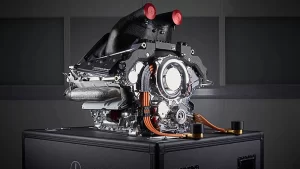
In this rapidly evolving sport, the future of competition in Formula 1 promises to be fiercely contested, with established powerhouses vying for supremacy against a backdrop of emerging challengers and changing dynamics. As teams adapt to the demands of a new era, the stage is set for a thrilling chapter in the sport’s storied history, where innovation, ingenuity, and talent will continue to reign supreme on the world’s greatest racing stage.
Stay tuned to The Roundup for future news regarding formula 1!


